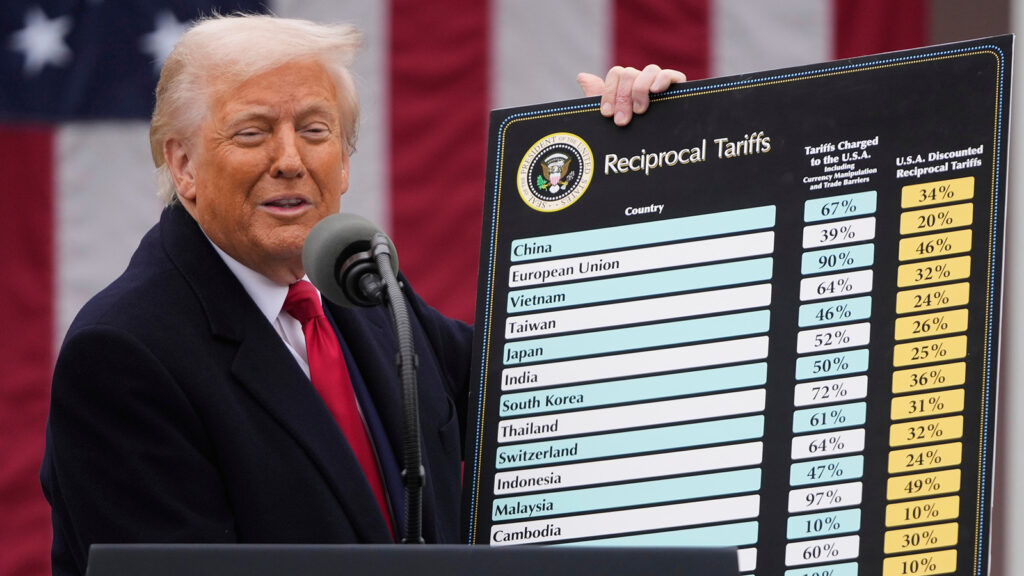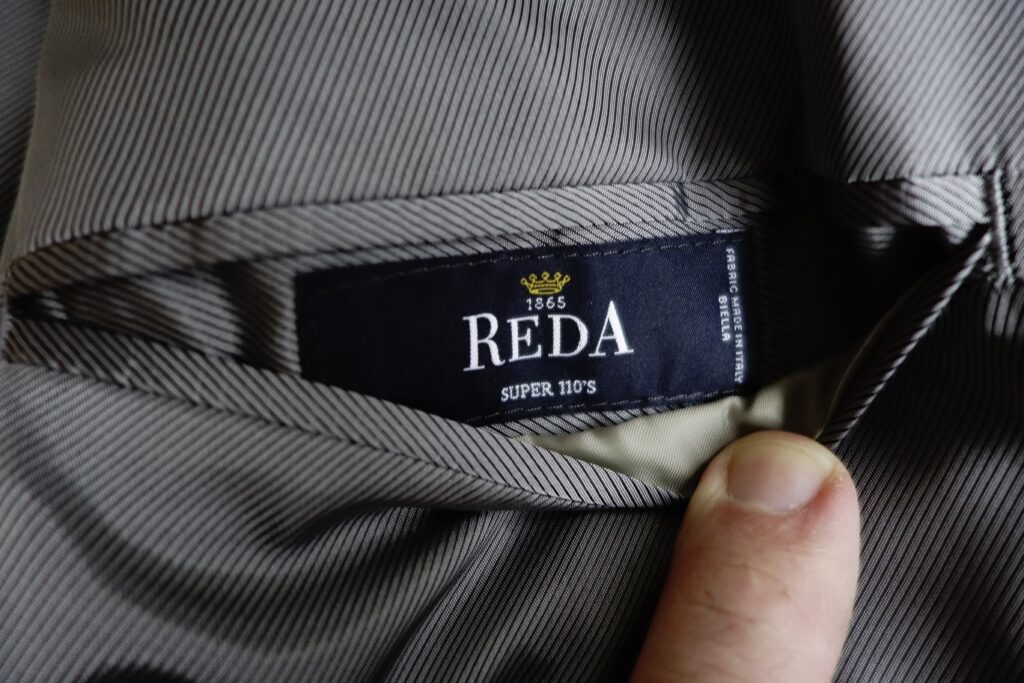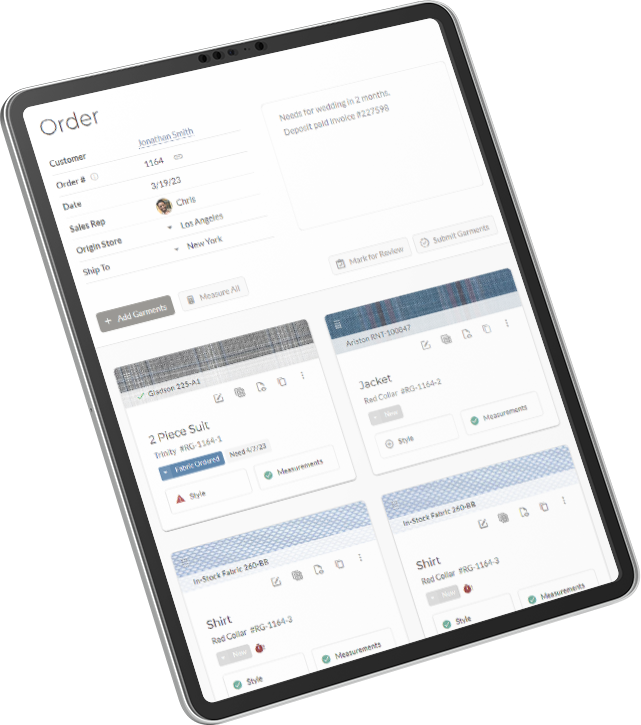
If you’re running a small business selling custom, made-to-measure garments produced overseas—particularly in China—navigating tariffs, duties, and customs clearance just became even more critical. With the recent announcement on April 2nd, dubbed “Liberation Day,” the continuation and adjustment of Section 301 tariffs (the so-called “Trump Tariffs”) is essential knowledge. Here’s your comprehensive guide.
And in case you missed class yesterday…
Section 301 originates from the U.S. Trade Act of 1974. It allows the U.S. government to impose additional tariffs to counter unfair trade practices by other countries—in recent years, notably China. Starting in 2018, these tariffs have significantly impacted small businesses importing apparel from China.
These tariffs are charged in addition to regular import duties and are intended as punitive measures, typically ranging between 7.5% to 25%, depending on the product’s classification (more on that in a moment).
The April 2nd announcement clarified tariff adjustments based on reciprocal trade principles. View the full list of new tariffs here.
Here is a breakdown showing specifically the changes on tariffs on goods from China:
| Product Category | Previous Tariff | New Additional Tariff | Total Tariff |
|---|---|---|---|
| Apparel & Textiles | 15% | +10% | 25% |
| Electronics | 7.5% | +5% | 12.5% |
| Footwear | 12% | +8% | 20% |
| Machinery | 10% | +5% | 15% |
Important Note: The percentages shown are the additional increases. This means the entire tariff amount listed isn’t new; rather, it represents incremental increases to the previously existing tariffs.
The Trump tariff announced on China is now 25% on the purchase price of Apparel and Textiles from China, a 10% increase.

You may notice some tariff charts or sources citing a “34%” tariff rate for apparel from China. Here’s how that number breaks down:
Standard apparel tariff: Most garments imported into the U.S. already carry a base customs duty, typically averaging around 9%, depending on the type and fabric composition. Section 301 tariff (“Trump tariff”): This is an additional punitive tariff applied specifically to products originating in China, now increased to 25% for apparel and textiles.
The combined total of these two tariffs is therefore approximately 34% (9% standard duty + 25% additional tariff).
The “25%” figure specifically references the tariff (increasing from 15% to 25%), whereas the “34%” represents the total effective tariff including standard duties.
Here’s a example breakdown table of DHL costs for importing apparel from China, comparing previous tariff fees with the new adjusted rates. This calculation assumes the standard apparel tariff averages 9%, with the Section 301 tariff increasing from 15% to 25% (an additional 10%).
| Purchase Cost | Previous Customs & Tariff Fees (24%) | New Customs & Tariff Fees (34%) |
|---|---|---|
| $1,000 | $240 | $340 |
| $3,000 | $720 | $1,020 |
| $5,000 | $1,200 | $1,700 |
| $10,000 | $2,400 | $3,400 |
When declaring the value of imported goods, the manufacturer or exporter typically prepares the commercial invoice listing the transaction price you actually paid. However, as the importer, you (the importer) are ultimately responsible for ensuring the declared value accurately reflects the full amount, including costs of production, packaging, and certain freight costs.
Some importers attempt workarounds to lower declared prices, such as:
However, these practices are risky and may result in heavy fines, penalties, and increased scrutiny by Customs. It’s critical to remain accurate and transparent, keeping in mind that legitimate reductions are possible through negotiated pricing or bulk purchasing, which should also appear clearly on your documentation.
When a tariff is paid—whether directly by you or advanced on your behalf by a shipping carrier—the money ultimately goes directly to the U.S. Department of the Treasury through the U.S. Customs and Border Protection (CBP).
In practice, here’s how it works:
This means tariff payments don’t go to carriers or manufacturers but are collected as federal revenue.

It’s easy to assume that you might only be charged a tariff for the labor of the garment, since the fabric was originally imported from a different country. But unfortunately, the system does not work that way.
Customs duties and Section 301 tariffs are based on the country of final production (what’s called “substantial transformation“), not fabric origin. If garments are sewn in China, they’re considered Chinese products—even if the fabric originates from Europe or other countries.
The De Minimis rule, also known as Section 321, allows shipments valued at $800 or less to enter the U.S. duty-free and without 301 tariffs. This exemption applies to most goods, including apparel, as long as they’re not subject to other regulatory restrictions or prohibitions.
However, the CBP closely monitors repeated small shipments under $800, as these may appear as attempts to bypass tariffs intentionally. Consistent low-value imports could trigger scrutiny, additional inspections, or penalties.
For custom apparel, small orders such as Basted or Rag Fittings, as well as part orders are expected to be subject to De Minimis Rules. Therefore, this means no customs duties or additional tariffs are generally collected on these qualifying shipments, since they can be typically be valued at or below $800.
No duties or tariffs are assessed on qualifying shipments of $800 or less, which may include rag and basted fittings, as well as part orders.
When importing custom garments via popular carriers, each has specific processes:
Informal Entry: FedEx automatically clears goods valued up to $2,500, billing you afterward.
Formal Entry: Required for shipments over $2,500; FedEx can handle formal customs entries or you may select your own broker.
Fees:
Clearance/Brokerage Fee (~$20-$50)
Disbursement/Advancement Fee (approx. 2% or minimum $10-15)
Informal Entry: Generally handles entries automatically below $2,500.
Formal Entry: Above $2,500 requires formal entry and possibly a bond; UPS brokerage available.
Fees:
Entry Preparation and Brokerage Fee (varies ~$25-$50+ depending on value)
Bond fees and Advancement Fees may apply.
UPS Customs Brokerage Services
Informal Entry: DHL usually handles customs for goods valued under $2,500, billing the customer.
Formal Entry: Goods above $2,500 must undergo formal customs procedures; DHL can act as your customs broker.
Fees:
Clearance Administration Fee (~$15-$30)
Payment Advance/Disbursement Fee (~2-3% of advanced duties/tariffs)
If things get complicated, consider consulting a customs broker. Professional brokers simplify complex classifications and ensure compliance.
Monitor De Minimis Shipments–Frequent small shipments may be to your benefit, but are also closely scrutinized by CPB.
It’s recommended to keep customs-related records for at least five years because U.S. Customs and Border Protection (CBP) regulations require importers to maintain documentation for that period. This requirement allows CBP to perform audits, verify tariff classifications, valuations, and compliance with import regulations, even several years after a shipment has entered the U.S.
As a small business in the made-to-measure garment sector, demystifying these tariff changes is a crucial step toward staying compliant and competitive. It’s natural to feel intimidated by big numbers and trade war rhetoric, but don’t let these factors overwhelm you. Instead, adopt a studied, incremental approach to managing tariffs. While these changes will indeed affect your bottom line, the actual adjustments you’ll need to make are manageable. With clarity and careful planning, you can confidently adapt to these tariff shifts and continue thriving.

